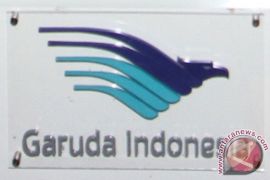"Garuda Indonesia`s financial performance in 2013 was affected by rupiah depreciation and high fuel price," Garuda`s president director Emirsyah Satar said.Tangerang, Banten (ANTARA News) - Publicly listed PT Garuda Indonesias net profit dropped sharply by 89.89 percent to US$11.2 million in 2013 from US$110.8 million in 2012.
Its operating profit meanwhile dropped by 66.4 percent to US$56.4 million from US$168.1 million in 2012.
"Garuda Indonesias financial performance in 2013 was affected by rupiah depreciation and high fuel price," Garudas president director Emirsyah Satar said at a press conference here on Monday.
He said besides the two factors Garuda had also invested heavily in the year to increase the number of its fleet to support the development of its subsidiary, Citilink, as a low cost carrier.
"In the US dollar the companys income was a bit different. Our income is in the US dollar while the rupiah has so far depreciated and so we have been affected by it. However in the rupiah term our income is quite good," he said.
"Sixty percent of Garuda Indonesias operating cost is in the US dollar while the rest 40 percent in the rupiah. Fifty percent of its income meanwhile is in the US dollar and 50 percent others in the rupiah," he said.
Emirsyah said Garuda Indonesia bore US$3.71 billion in operating cost in 2013, up from US$3.29 billion in the previous year.
Garuda meanwhile spent US$1.42 billion for fuel in 2013 which was up from US$1.25 billion in 2012 and the biggest operational cost compared to cost for airplane leasing, insurance, employees salaries and others.
Although its net profit was down, Emirsyah said in 2013 Garuda was able to pay off its debts totaling US$130 million consisting of US$55 million to Citi Club Deal-1 and US$75 million to Indonesia Exim Bank, he said.
He said Garuda Indonesia ended 2013 with an operating revenue of US$3.72 billion up seven percetn from US$3.47 billion in 2012.
Its passenger revenue meanwhile rose 10 percent to US$2.96 billion in 2013 from US$2.69 billion in 2012.
"This is a good achievement in view of the big pressure on airlines in the world in 2013," he said.
During 2013 Garuda Indonesia carried 25 million passengers up 22.3 percent from 20.4 million in 2012.
Garudas availability seat per kilometer (ASK) in 2013 also increased by 19.8 percent to 43.13 billion from 36 billion in 2012.
Emirsyah said Garuda was also able to increase cargo shipment in 2013 by 23.4 percent to 345,923 tons from 280,285 tons in 2012.
Meanwhile its passenger yield was down 6.1 percent from US$9.65 in 2012 to US$9.1 in 2013.
Garudas flight frequency (domestic and international) rose 28.1 percent to 196.403 flights from 153.266 flights in 2012.
Regarding network development and fleet increase in 2013 Emirsyah said that Garuda Indonesia has been able to maintain aircraft utilization by 10:44 hours. Seat load factor meanwhile could reach 74.1 percent, down a bit from 75.9 percent in the previous year and its on-time performance in 2013 reached 83.8 percent compared to 84.9 percent in 2012.
Garudas international market share in 2013 was 23.5 percent down from 24.1 percent in 2012.
Its domestic market share in 2013 meanwhile was relatively stable at around 28 percent compared to that of 2012.
During 2013 Garuda Indonesia Group received 36 new aircraft consisting of four Boeing 777-300 ER, two Airbus A330-200, one Airbus 330-300, 10 Boeing 737-800 Next Generation, 7 Bombardier CRJ-1000 NextGen, two ATR 72-600 and 10 Airbus A320 for Citilink to increase the total number of aircraft being operated in 2013 to 140 with their average age of five years.(*)
Editor: Heru Purwanto
Copyright © ANTARA 2014











